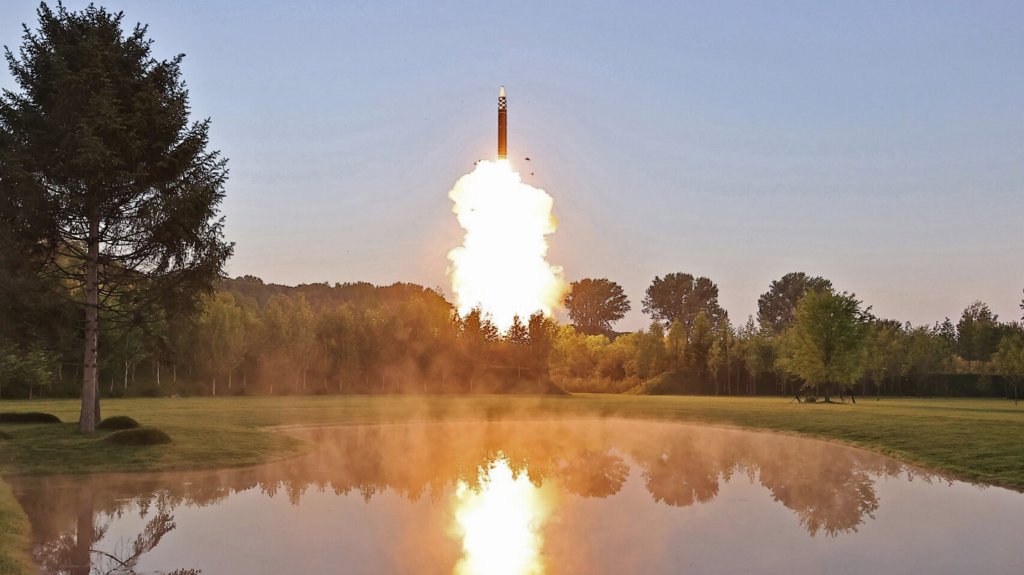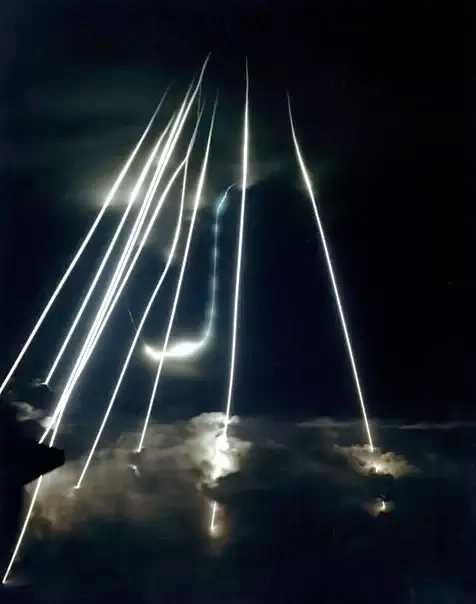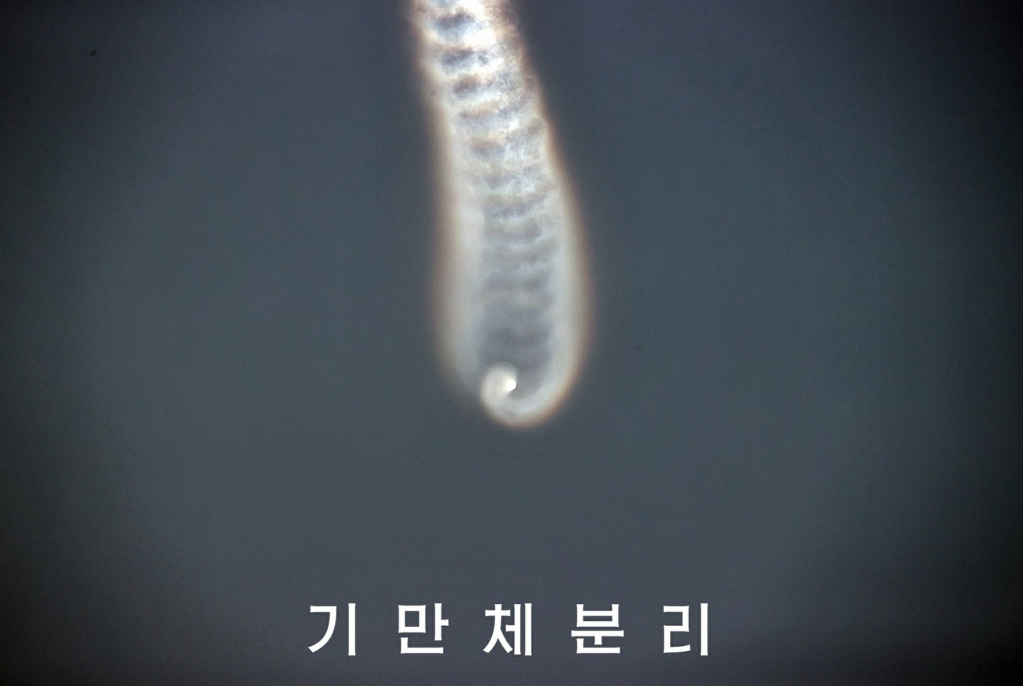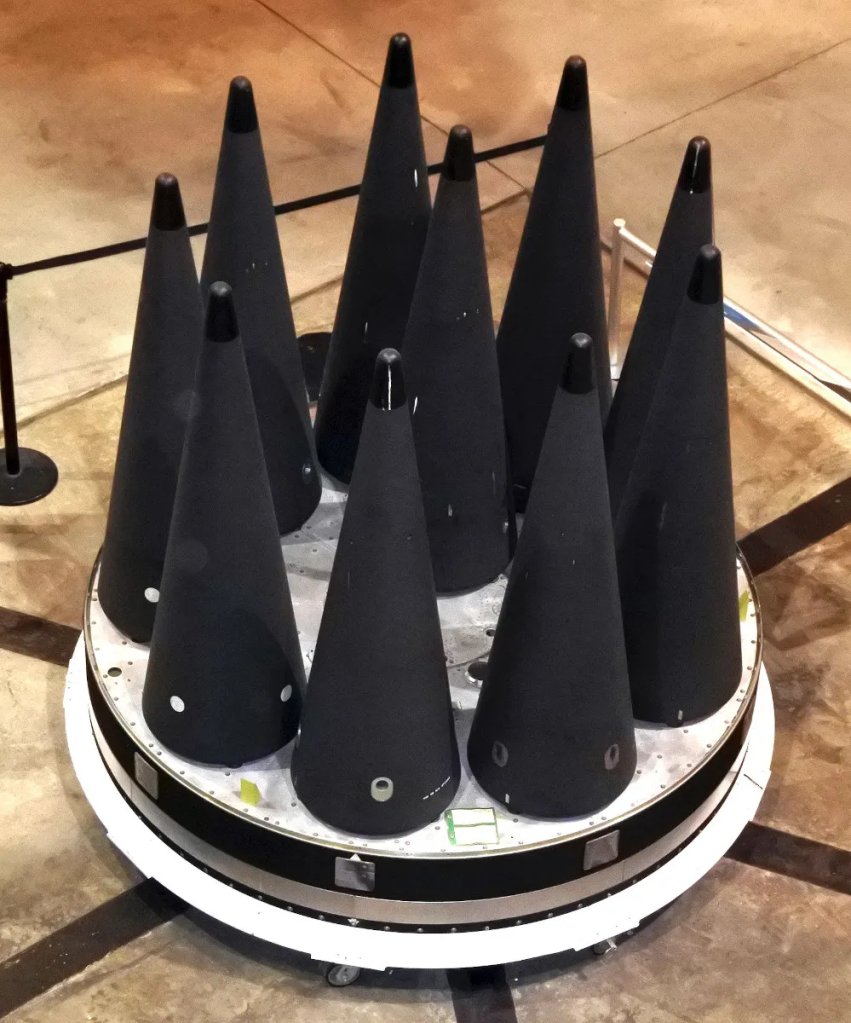North Korea says it has successfully tested a ballistic missile fitted with a multiple independently targetable reentry vehicle (MIRV) payload — one that contains several warheads, each capable of hitting a different target. Meanwhile, South Korea claims that the test was a failure. Whether successful or not, the emergence of MIRV technologies is another indicator of North Korea’s rapidly developing strategic arsenal, which is growing in size and capabilities despite sanctions.
The test of the MIRVed missile took place on June 26 in the presence of various North Korean officials and the missile covered a range of 105 to 124 miles, according to the KCNA, the country’s state news agency. The individual warheads “were guided precisely to three target coordinates,” according to the report. The same source said that the test was of “great significance in achieving the goal of advancing missile technology.”

The type of missile used is unclear, but reports suggest it was a special test example. Pyongyang’s state news agency described the use of a “first-stage engine of an intermediate-range solid-fuel ballistic missile,” with the overall shortened trajectory of the missile test having been dictated as the most efficient way of measuring the performance of the MIRVs while ensuring safety.
According to Ankit Panda, the Stanton Senior Fellow in the Nuclear Policy Program at the Carnegie Endowment for International Peace, the test involved a modified Hwasong-16 intermediate-range ballistic missile (IRBM) booster to carry out a shortened-range test specifically to validate the release of three independent warheads. Meanwhile, the nosecone of the missile, at least based on the available official imagery, resembles the Hwasong-17 intercontinental ballistic missile (ICBM).
Interestingly, North Korea says that at least one decoy was also released from the missile, suggesting that some form of penetration aid (or ‘penaid’) was also tested, a device that increases the actual warheads’ chances of reaching the target without detection or interception. “The effectiveness of a decoy separated from the missile was also verified by anti-air radar,” KCNA claims.
The U.S. Air Force video below gives a good general look at how a MIRVed ICBM, loaded with a mixture of warheads and penetration aids, functions.

Photos released by KCNA purport to show the separation of individual warheads (as well as a decoy) during the test.

As to the location of the test, this appears to have been a launch site located close to one of Kim Jong Un’s mansions east of Pyongyang. Satellite imagery shows scorch marks on the ground at the location consistent with a missile launch. However, there was no mention of the North Korean leader having witnessed the test, as he has done on similar occasions in the past.
The North Korean state news agency stated: “The leaders who observed the important technical test emphasized that improving the ability of individual mobile combat units to destroy individual targets is a very important defense technology task and a matter of top priority for the Party’s central leadership, and they called for thorough scientific and technological measures to further improve the effectiveness of deception [decoy] systems.”
South Korean officials, however, said the test was a failure.
The Joint Chiefs of Staff (JCS) in Seoul confirmed that they detected the test on Wednesday morning around 5:30 a.m. local time.
Speaking on condition of anonymity, a JCS official later told the press that the test appeared to involve a hypersonic missile that “exploded” in the air east of Wonsan. The official said the missile had traveled around 155 miles from its launch site in Pyongyang when it failed, sending fragments into the sea. This appears to be the only source that identifies the missile as a hypersonic design.

A JCS spokesperson Lee Seong-joon added that the missile exploded “in the early stage of flight” and accused the North of trying to “deceive and exaggerate” with its report. Lee said the JCS had come to its conclusion based on additional information that’s not publicly available.
The Japanese Ministry of Defense also confirmed it had detected the launch. It described the missile attaining a maximum altitude of around 62 miles before coming down in the Sea of Japan.
At this point, it remains very much unclear whether the missile test genuinely ended in failure or not, with a possibility that South Korea misidentified the separating warheads and decoy as the missile itself broke up. Seoul also has a track record of downplaying or challenging North Korea’s claims about its military developments.

Ankit Panda told NK News that he saw no evidence of catastrophic failure, but also said that the available imagery didn’t confirm beyond doubt that North Korea had conducted its first MIRV test. Even if the test didn’t end as planned, North Korea will still learn from it, continuing the rapid ballistic missile development path of iterative testing that it has been on since 2016.
Regardless, it’s significant that North Korea has, for the first time, publicly declared a test involving a MIRVed missile.
MIRV technology was one of the key strategic capabilities that Kim Jong Un had called for in a five-year military development plan announced in 2021, part of his ambition to build up an “invincible military” to face off perceived aggression from the United States.
A complication of videos providing a general look at how MIRVed ICBMs during test campaigns:


Much of these developments — which also include super-heavy intercontinental ballistic missiles (ICBMs), hypersonic missiles, cruise missiles, and submarine-launched ballistic missiles (SLBMs) — are focused on improving the overall survivability of North Korea’s nuclear forces, which would be key targets in any major confrontation with a hostile power.
While a MIRV configuration doesn’t make the missile any more survivable on the ground, it greatly complicates matters for enemy defenses, simply by increasing the volume of rapidly incoming threats they have to contend with. For terminal intercept, each MIRV would have to be taken down. Target discrimination and subsequent Interception, including in the midcourse portion of the missile’s flight, becomes harder when the missile also carries decoys — as reportedly in yesterday’s North Korea test — and other countermeasures.

At the same time, a MIRV-equipped missile can also strike a larger number of targets than one with a single warhead, although it’s unclear exactly how many warheads North Korea hopes to add and the eventual figuration will be highly dependent on the missile itself.
Among the most likely candidates for being loaded with North Korean MIRVs would include the Hwasong-18, its first solid-fuel ICBM design, which was first tested in April 2023.

More ambitious would be porting the MIRV technology onto SLBMs, especially bearing in mind North Korea’s previous problems in this area and the apparent short range of the available missiles at this point.
It’s noteworthy that the United States is apparently starting to consider a return to deploying ICBMs with multiple nuclear warheads, as you can read about here. While the U.S. Air Force’s LGM-30G Minuteman III ICBMs have this capability, they are currently only fielded with one warhead due to arms control agreements with Russia. The service’s future LGM-35A Sentinel ICBMs are currently also expected to be deployed with a single warhead.
Aside from ICBMs and SLBMs, there could also be a compelling argument for North Korea to adapt shorter-ranged, ground-launched ballistic missiles to carry MIRVed payloads. IRBMs. in particular, delivering multiple warheads would have a better chance of overwhelming defenses, especially terminal ones like the Terminal High Altitude Area Defense (THAAD) system that made its first recorded successful operational interception against a Houthi ballistic missile in January 2022. THAAD currently protects Guam, for instance. Adding decoys to shorter-range ballistic missiles could also be beneficial, and these capabilities already exist on other short-range ballistic missile types.

Aside from developing North Korea’s broader strategic ambitions, it may well be no coincidence that yesterday’s test took place during a large-scale live-fire exercise by the South Korean military. These are the first of their kind to be carried out so close to the border with the North for several years. Earlier this week, South Korea conducted more live-fire drills, involving multiple launch rocket systems (MLRS), marking the 74th anniversary of the start of the Korean War.

In the past, military maneuvers in the South — especially those involving U.S. participation — have been met by missile tests and other shows of force in the North.
Whatever the truth behind yesterday’s test — and whether or not it was successful and to what degree — it should be no surprise to learn that North Korea is advancing its development of MIRV and penetration aid technology. There remain, however, questions about how far this has advanced and to what degree the technological challenges are within the North’s reach. In particular, while it may be technically feasible to have multiple warheads separate from a missile, placing those warheads accurately on different targets is far more complex. After all, it’s not even clear whether North Korea has totally mastered the ability to accurately place a single warhead on a target after release from a long-range ballistic missile.
Indeed, this is one area in which Russian expertise could be enormously beneficial.
Russia’s President Vladimir Putin recently signed a mutual defense pact with North Korea, which is increasingly establishing itself as a key military ally in Moscow’s war in Ukraine.
Russian forces have already received much-needed ammunition including artillery projectiles — reportedly numbered in the millions — as well as short-range ballistic missiles, although these appear to have been used in a mainly evaluation capacity and with mixed results.

In return, there have been fears that Russia may return the favor by providing North Korea with expertise to help with the further development of its ballistic missiles and nuclear weapons — as well as other conventional weapons and technologies.
On the other hand, there are other signals that North Korea might be more advanced in its MIRV developments than otherwise assumed.
In particular, there have been suggestions that previous tests in February and March 2022, and again in October and November of the same year, may have involved some kind of MIRV-related technologies.
With that in mind, we might not have to wait long until we see another publicly announced North Korean MIRV test. Ultimately, the plan will very likely be to demonstrate these capabilities on an ICBM using a lofted trajectory. Once this is achieved it will provide a much clearer indication of the country’s potential to deliver multiple warheads from a single missile over very considerable distances, including reaching anywhere in the United States.
Contact the author: thomas@thewarzone.com
